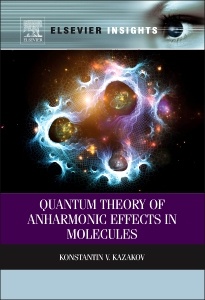Description
Quantum Theory of Anharmonic Effects in Molecules
Author: Kazakov Konstantin V.
Language: English
Subjects for Quantum Theory of Anharmonic Effects in Molecules:
Keywords
Anharmonic vibrations; creation and destruction operators; diatomic and polyatomic molecules; diatomic defects; dipolar-moment function; Equations of quantum mechanics; Factorization method; Fermi resonance; Feynman graphs; generalized Morse oscillator; Herman-Wallis factor; hypervirial theorem; ionic crystals; Magneto-optical anharmonicity; method of contact transformations; modified Pöschl-Teller potential; molecular dimers; Molecular vibrations; molecules; Morse potential; overtone transitions; perturbation method; perturbation theory; point groups; polynomials and functions of quantum numbers; second quantization; spin interaction; theory of radiation
232 p. · 15x22.8 cm · Hardback
Withdrawn from sale
Description
/li>Contents
/li>Readership
/li>Biography
/li>Comment
/li>
Presented in a clear and straightforward analysis, this book explores quantum mechanics and the application of quantum mechanics to interpret spectral phenomena. Specifically, the book discusses the relation between spectral features in mid or rear infrared regions, or in Raman scattering spectrum, and interactions between molecules or molecular species such as molecular ions, and their respective motions in gaseous or crystalline conditions. Beginning with an overview of conventional methods and problems which arise in molecular spectroscopy, the second half of the book suggests original techniques to investigate the area. The treatment is based on rigorous quantum-mechanical theories and procedures that are readily implemented in either manual methods or with symbolic computational software.
1. The Laws of Quantum Mechanics
2. The Evolution of Perturbation Theory
3. Polynomials of Quantum Numbers
4. Effects of Anharmonicity
5. The Method of Factorization
Theoretical and experimental physicists as well as chemists and other practitioners of quantitative molecular spectrometry.
- Offers a novel approach in its application to physical phenomena
- Concise and clear discussions of quantum-mechanical theories and spectrum analysis
- Provides both theories and applications
These books may interest you

Physics of Radiation and Climate 214.69 €



